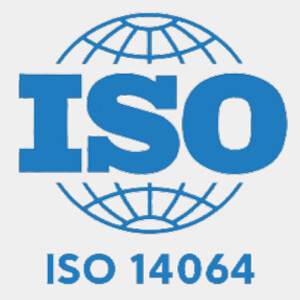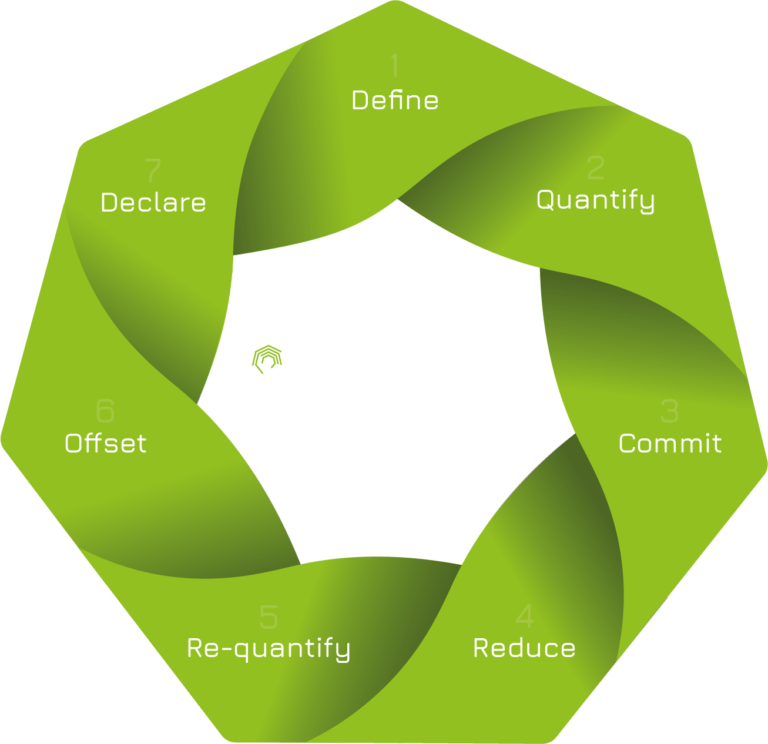As the world increasingly focuses on combating climate change and reducing greenhouse gas (GHG) emissions, businesses must actively participate in this global effort. Achieving ISO 14064-1 compliance is an essential step for organisations looking to demonstrate their commitment to environmental responsibility. As part of the ISO 14064 series, ISO 14064-1 provides a clear framework for quantifying and reporting GHG emissions at the organisation level, facilitating effective emissions management and contributing towards carbon neutrality. Carbonology® combines a wealth of experience in assisting businesses to understand and comply with ISO Standards successfully, making them the ideal partner for your journey towards ISO 14064-1 compliance.
In this comprehensive guide, we will explore the foundational principles of ISO 14064-1, highlighting the steps to successful GHG emissions management, along with Carbonology®’s expert insights and guidance in achieving compliance with this vital standard.
Key Principles of ISO 14064-1
ISO 14064-1, as part of the broader ISO 14064 family of standards, focuses on the quantification and reporting of greenhouse gas (GHG) emissions and removals at the organisation level. The key principles of ISO 14064-1 include transparency, accuracy, consistency, comparability, and completeness in inventory management and reporting.
1. Transparency: Facilitating a clear and explicit understanding of the methodologies, data sources, and assumptions used in GHG emissions calculations and reporting.
2. Accuracy: Ensuring GHG emissions data are systematically calculated and reported, minimising uncertainties and biases in results.
3. Consistency: Applying uniform criteria, methodologies, and factors across reporting periods, allowing comparison and analysis of trends.
4. Comparability: Empowering organisations to examine and benchmark their GHG emissions performance against other organisations within the same industry and geographical area.
5. Completeness: Inclusive reporting of all relevant sources of GHG emissions within an organisation’s inventory boundary.
Implementing ISO 14064-1: A Step-by-Step Guide

Partnering with Carbonology® can significantly streamline the process of achieving ISO 14064-1 compliance. The following steps form the foundation for implementing ISO 14064-1 within your organisation:
Step 1: Establish the Organisational Boundary
Determining the organisational boundary is critical to ensure comprehensive emissions reporting. Define your boundary based on the operational control or equity share approach. Operational control refers to the facilities and emissions sources under your organisation’s direct control, whereas equity share pertains to your organisation’s equity ownership proportion within joint ventures or investments.
Step 2: Choose Your Base Year and Emissions Reporting Period
Select your base year—a reference point against which your emissions performance will be compared over time—considering the availability and quality of historical data. Additionally, choose your emissions reporting period; typically, organisations opt for a calendar year or a financial year basis.
Step 3: Classify Your Emission Sources
Categorise your emissions sources according to the three GHG Protocol Scopes:
1. Scope 1: Covers direct GHG emissions from sources within the organisational boundary, such as on-site fuel combustion and company-owned vehicles.
2. Scope 2: Accounts for indirect GHG emissions associated with purchased electricity, steam, heating or cooling used by the organisation.
3. Scope 3: Encompasses all other indirect emissions that occur as a result of the organisation’s activities but are outside its operational control, such as business travel, upstream or downstream emissions in the supply chain, and waste disposal.
Step 4: Quantify Your GHG Emissions
Calculate your organisation’s GHG emissions using the standardised methods and emission factors defined by ISO 14064-1. Collaborating with Carbonology® can help ensure accurate and consistent calculations in this crucial step.
Step 5: Report Your GHG Emissions Inventory
Compile your emissions data in a structured report, adhering to ISO 14064-1’s reporting principles and guidelines. This report should include inventory data, methodologies, assumptions, and information on corrective actions and data quality.
Step 6: Obtain Third-Party Verification and Assurance
Seek third-party verification to ensure the accuracy and reliability of your GHG emissions inventory. Verification involves an independent evaluation of your organisation’s GHG emissions data and reports, undertaken by a competent and impartial external body such as Carbonology®. This step bolsters confidence in your emissions data credibility and strengthens stakeholder trust.
Continuous Improvement and Accreditation
Achieving ISO 14064-1 compliance is not a one-time process; continuous improvement is vital for ongoing effective emissions management. Periodically review your GHG emissions inventory and update your methodologies in response to new data, organisational changes, or regulatory requirements. Implementing an ISO 14001-compliant Environmental Management System (EMS) can provide a robust framework for supporting continuous improvement in your GHG emissions management.
Additionally, consider seeking accreditation from recognised bodies, such as The Carbon Trust or CDP, to demonstrate your commitment to sustainability and enhance your organisation’s environmental reputation. Carbonology® can offer expert guidance on achieving these accolades, further elevating your status within the green business landscape.
With the help of Carbonology®, your organisation can successfully implement ISO 14064-1, enabling systematic management and reporting of your GHG emissions while contributing to the global fight against climate change.
Embark on Your ISO 14064-1 Journey with Carbonology®
ISO 14064-1 is an essential framework for organisations striving to demonstrate their dedication to environmentally responsible GHG emissions management. Complying with this standard paves the way for enhanced sustainability, stakeholder trust, and a solid reputation within the green business landscape. With Carbonology® as your trusted partner, your organisation will receive unparalleled guidance, support, and expertise throughout the entire ISO 14064-1 implementation process.
Don’t delay in embracing a more sustainable future for your organisation. Reach out to Carbonology® today and let their team of experts help you embark on your journey towards ISO 14064-1 compliance, joining the ranks of leading businesses committed to reducing and reporting their greenhouse gas emissions responsibly. Together, we can make a difference in the fight against climate change.

